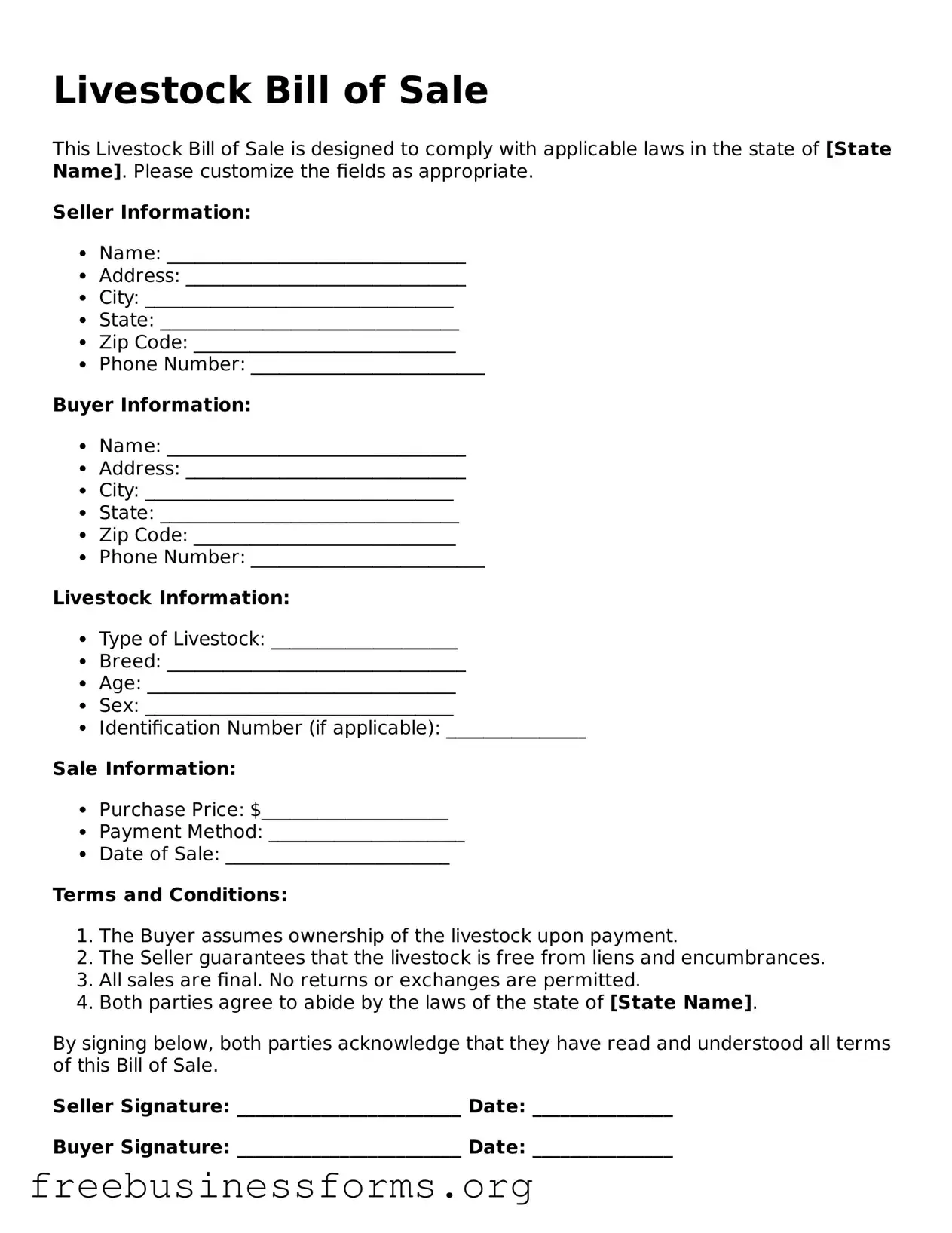Official Livestock Bill of Sale Form
A Livestock Bill of Sale form is a legal document that records the transfer of ownership of livestock from one party to another. This form serves as proof of the transaction and outlines important details such as the description of the animals, sale price, and the names of both the buyer and seller. Understanding this form is essential for anyone involved in buying or selling livestock to ensure a smooth and legally binding transaction.
Open Form Here
